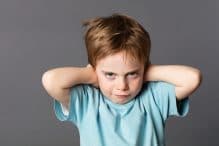We are all born with differences that make us unique, whether in our physical appearance, personality, or behaviour. Furthermore, we all have our own ways or perceiving and responding to different sensations. In fact, some individuals may react to stimuli in more or less intense ways.
These differences in perception are often the cause of a disorder called “sensory processing disorder”. Let’s take a look at this misunderstood disorder that can have an impact on the behaviour of children.
What is sensory processing?
This is how our brains receive information from our body and senses. The brain then responds in an appropriate way. This unconscious process allows our brains to receive information from our body (positioning, sensation of fatigue) as well as from our five senses in order to formulate a response.
To understand how our brains process sensory information, you need to understand the two ways it does so:
Sensory modulation: This process is how our brains filter stimuli in order to pay attention to the ones that are more relevant in any given situation. It’s the process that helps us manage several sensory inputs. For instance, while reading this article, your senses perceive ambient noises, how your clothes feel on your skin, and the smell emanating from your colleague’s lunch. Thanks to sensory modulation, you’re still able to filter these inputs and concentrate on the visual information your eyes are transmitting to your brain, that is to say the words in this text.
Sensory discrimination: This is a cognitive process that allows you to perceive various stimuli and categorize them. For example, sensory discrimination allows you to infer the texture of the foods you are about to eat simply by looking at them on your plate.
A child with sensory modulation disorder will react in an exaggerated way to a stimulus, while one affected by a sensory discrimination disorder will have trouble understanding and classifying what their senses are perceiving.
How can you detect a disorder?
Most sensory disorders affect sensory modulation. There are two subtypes:
Hypersensitivity disorder: The child will overreact to certain stimuli. They will not be able to support the feeling of clothing on their skin, some noises might paralyze them, or they might get angry when someone bumps into them. A child with hypersensitivity disorder will act as if their senses are overdeveloped. In fact, everything will seem too loud or too intense.
Hyposensitivity disorder: In contrast, children with this disorder seem to lack energy and motivation. They’ll only be able to concentrate in class if there are lots of stimuli around them and they might seek to create more stimuli by rocking back and forth or chewing on their hair or clothing.
What to do if in doubt?
You can help your child by booking an appointment with an occupational therapist. By simply discussing with you, the occupational therapist will be able to understand your child’s sensory perception and how it affects their daily life. They’ll also be able to recommend exercises that will help your child self-regulate, that is to say understand the stimuli that they are more or less sensitive to and equip them with the tools to adjust their response.
Thanks to GO Paediatrics, Clinique GO™ offers mobile occupational therapy services for children. That way, your child will be able to meet with a professional in a familiar environment and get the help necessary to overcome their disorder.
 Approuvé par Francis Desjardins
Approuvé par Francis Desjardins



